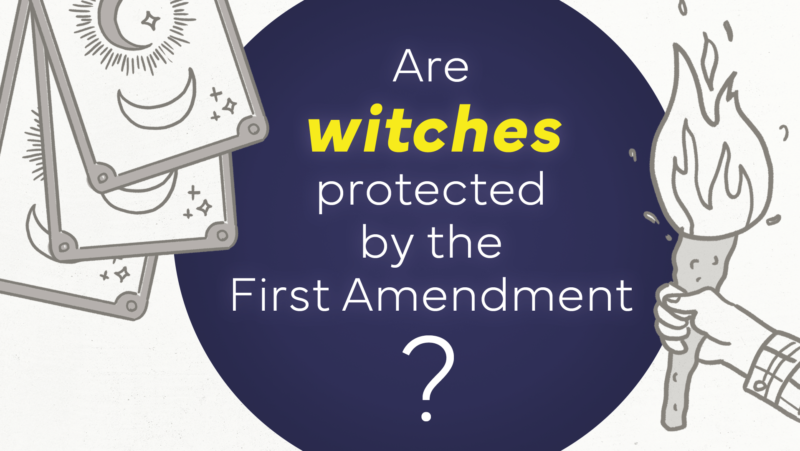Teaching About Religion

“Religious Studies are essential for understanding the role of religion in public life, negotiating differences in the public square and forging public policies that serve the common good. Through the deliberate and thoughtful study of religion in historic and cultural contexts, students will be adequately prepared for citizenship in a religiously pluralistic society and world.”
— from “The Study of Religion in the Social Studies Curriculum” by the National Council for the Social Studies
Growing numbers of educators throughout the United States recognize that study about religion in social studies, literature, art and music is an essential part of a complete public school education. States and school districts are issuing new mandates and guidelines for the inclusion of teaching about religion in the curriculum. As a result, textbooks are expanding discussions of religion’s role in history and culture, and many new supplementary materials concerning religion in history are being developed.
Considering this national trend to include more about religion in the curriculum, the question for teachers is no longer “Should I teach about religion?” but rather “What should I teach, and how should I do it?” Outlined here is a civic and academic framework for answering those questions. The aim of the guidelines and suggestions that follow is to help classroom teachers meet the challenges of teaching about religion in ways that are constitutionally permissible, educationally sound and sensitive to the beliefs of students and parents.
WHY STUDY ABOUT RELIGION IS IMPORTANT
Teaching about religion is important and necessary if public schools are to provide students with a complete education. Much of history, art, music, literature and contemporary life is unintelligible without an understanding of the major religious ideas and influences that have shaped history and culture throughout the world. Even teaching religious liberty, the civic foundation that sustains the United States as one nation of many faiths, requires teaching about the role of religion in history and culture.
Understanding the role religion plays in history and culture is of special importance in our increasingly diverse society. Expanding religious pluralism in the United States confronts our schools and our nation with unprecedented challenges. America has shifted from the largely Protestant pluralism of the 18th century to a pluralism that now includes people of all faiths and a growing number of people who indicate no religious preference. New populations of Muslims, Buddhists and many other religious and ethnic groups are entering schools throughout the nation.
If we are to live with our differences, we must attempt through education to replace stereotypes and prejudices with understanding and respect. Students need to recognize that religious and philosophical beliefs and practices are of deep significance to much of our citizenry. Omission of discussion about the religious and philosophical roots of developments in history can give students the false impression that the religious and ethical traditions of humankind are insignificant or unimportant.
A CIVIC FRAMEWORK FOR TEACHING ABOUT RELIGION
The religious-liberty clauses of the First Amendment to the Constitution provide the civic framework for teaching about religion in public schools. The U.S. Supreme Court has interpreted the First Amendment to mean that public schools may neither promote nor inhibit religious belief or nonbelief. The public school curriculum may not, therefore, include religious indoctrination in any form (including hostility to religions or religion in general). Such teaching would constitute state sponsorship of religion and would violate the freedom of conscience protected by the First Amendment.
Religious indoctrination, however, is not the same as teaching about religion. In the 1960s, school-prayer cases The Supreme Court indicated that public school education may include teaching about religion. In Abington v. Schempp (1963), the court stated:
“[I]t might well be said that one’s education is not complete without a study of comparative religion or the history of religion and its relationship to the advancement of civilization. It certainly may be said that the Bible is worthy of study for its literary and historic qualities. Nothing we have said here indicates that such study of the Bible or of religion, when presented objectively as part of a secular program of education, may not be affected consistently with the First Amendment.”
All public school teachers must have a clear understanding of the crucial difference between the teaching of religion (religious education) and teaching about religion. In 1988, a broad coalition of 17 religious and educational organizations published guidelines that distinguish between teaching about religion and religious indoctrination. The guidelines state, in part, that:
- The school’s approach to religion is academic, not devotional.
- The school strives for student awareness of religions but does not press for student acceptance of any one religion.
- The school sponsors study about religion, not the practice of religion.
- The school exposes students to a diversity of religious views; it does not impose any particular view.
- The school educates about all religions; it does not promote or denigrate any religion.
- The school informs students about various beliefs; it does not seek to conform students to any particular belief.
Resources for Educators
- To Pray or Not to Pray – When Does the First Amendment Protect Prayer at School?
- Explore the Constitution 2 Classroom collection, a group of professional development modules created for public school educators. Understand how the First Amendment’s religious liberty clauses protect people of all faiths and none, learn academically rigorous and constitutionally appropriate methods for teaching about religion and help students find common ground across difference. Each module is designed to quickly deliver key information, practical strategies and classroom-appropriate content on issues related to religious freedom, the First Amendment and religious literacy.
- Finding Common Ground: A First Amendment Guide to Religion and Public Schools - consensus guidelines on religious liberty in schools, endorsed by a broad range of religious and educational organizations. In January 2000, three of the guides were distributed by the U.S. Department of Education to every public school in the nation.
- Living With our Deepest Differences – a collection of 10 lesson plans that explain the history and significance of the First Amendment religious liberty clauses and their decisive contribution to individual and communal freedom and to American democracy. Lessons are designed to deepen each student’s appreciation of the principles of religious liberty for peoples of all faiths and of none and to establish a strong civic commitment to the ground rules by which all citizens can contend robustly but civilly over religious differences in public life.
- Teaching the Bible in Public School - Download lesson plans developed by the Society of Biblical Literature and the Freedom Forum that demonstrate how the academic study of biblical and other ancient texts can be appropriately included in public high school courses. The lesson plans incorporate the insights of recent scholarship in ways that foster religious literacy while safeguarding religious liberty. Students will learn about the ancient world and the historical development of religion as well as practice recognizing and respecting different points of view — all in the context of frameworks designed to encourage critical thinking and analysis of fascinating but often challenging texts.
- Inquiry Design Models – students use an inquiry-design model to explore religious identity formation and key aspects of the First Amendment’s religious liberty clauses, including the Establishment Clause and Free Exercise Clause. Each lesson begins with one of the following questions before guiding students through primary and secondary sources on the First Amendment.
- Teacher Education Lessons – many pre-service teachers enter the workforce with little or no training on religious freedom or religious literacy. These three lesson plans help future educators understand the unique challenges of teaching about religion in public schools.
First Amendment Stories of 2023: A Year in Review
Watch: How Lesser-Known Religions Have Protected Religious Freedom for All
Related Content
2025 Al Neuharth Free Spirit and Journalism Conference
All-Expenses-Paid Trip To Washington, D.C.
June 22-27, 2025
Skill-Building
Network Growing
Head Start On Your Future

